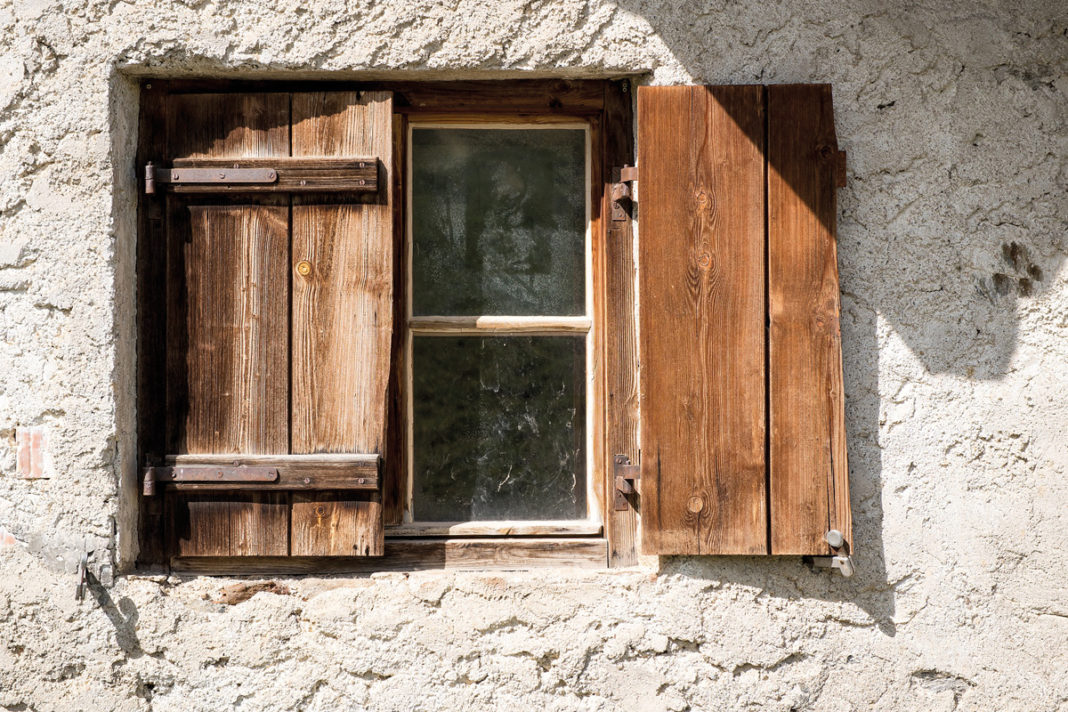The history of windows and doors dates back to 12,000 BC when it’s thought the Egyptians accidentally created glass beads and doors were comprised from simple planks of wood and hinges. But what about the history of the materials that have been used for manufacturing windows and doors ever since? Nick Cowley, MD of PVCu and composite window and door manufacturer Euramax, looks at the changing materials used in the industry

HISTORICALLY windows and doors were simply holes in walls that provided light and accessibility to the outside world. Before the luxury of glass was widely introduced in the 1800s, paper and animal hides acted to prevent cold air from coming in. Doors, on the other hand, have been made from wood since the first century and materials have evolved over the years to make them stronger and versatile.
From traditional wood and aluminium to the modified materials we see today, the industry is constantly exploring new materials.
Wood and aluminium
Wood has many features that has made this material ideal for windows and doors. It is strong and secure, environmentally friendly and offers a natural aesthetic. While wood has been a popular material for windows and doors for thousands of years, it can become damaged by changes in weather and temperatures, meaning that frequent maintenance is required to preserve quality. Furthermore, wood is not thermally efficient, and the quality can significantly degrade overtime.
From the 1970s, aluminium was introduced as a stronger and longer lasting alternative to wood. As well as being lighter and more manageable to work with, aluminium soon became another material choice for windows and doors manufacturers. However, aluminium doesn’t provide thermally efficient or aesthetically pleasing benefits of some of the materials used today.
While wood and aluminium were the most common fenestration materials in the past, they both possess flaws that meant that popularity has declined and the need for newer materials has increased.
PVCu and composites
Discovered by mistake in the 1800s, it wasn’t until the 1980s that unplasticised polyvinyl chloride (PVCu) was considered as a serious alternative to wood and aluminium and it soon became one of the most desired fenestration materials.
PVCu became popular for its versatility, durability and thermal efficiency and as home designs started to develop, homeowners required suitable windows and doors to match and PVCu became the likely choice.
However, while PVCu was favoured for many years, the introduction of composite windows and doors shifted the industry. Composite products have become extremely desired for their strength, energy efficiency and design possibilities.
For example, as environmental concerns have grown over the years, consumer demand for windows and doors that can offer superior energy efficiency has risen. Homes now need to be more secure, both thermally and for safety reasons, and a composite core is the key. This core is what makes composite doors difficult to force open and highly energy efficient.

While the internal properties make composite a desirable material, the external appearance is equally important. The growing interest in modern designs means that people now want windows and doors that can complement a modern home. Composite windows and doors are ideal as they can be designed in a range of colours and finishes, like the woodgrain finish windows and doors from Euramax.
Though materials are constantly changing, the importance of meeting industry regulations remains the same. Windows and doors need to meet performance and material standards in order to comply. For example, British Standards Institute (BSI) regulations BS EN 12608-1:2016 applies to the fabrication of PVCu profiles for windows and doors and BS 8529:2017 specifies the requirements for the design, construction and performance of composite doors.
Is the future hybrid?
Although composites have many benefits, the material can be susceptible to problems including warping, swelling and discolouration. To combat this, one material has been designed to overcome these problems. By combining PVCu and composite materials, hybrid materials provide the trusted functionality of PVCu and the stylish woodgrain finish of composite.
As hybrid materials are welcomed into the industry as a new alternative for doors, this material has the potential to replace composite window frames too.
While aluminium proved that materials didn’t need to be heavy to maintain strength, it did pose some disadvantages on the energy efficiency front. With the introduction of PVCu, composites and now hybrid materials, customers now have the option of aesthetically pleasing, energy efficient, strong and secure materials.
Long gone are the days of holes in walls covered with animal hide — but who knows what the next era of window and door design has in store.







